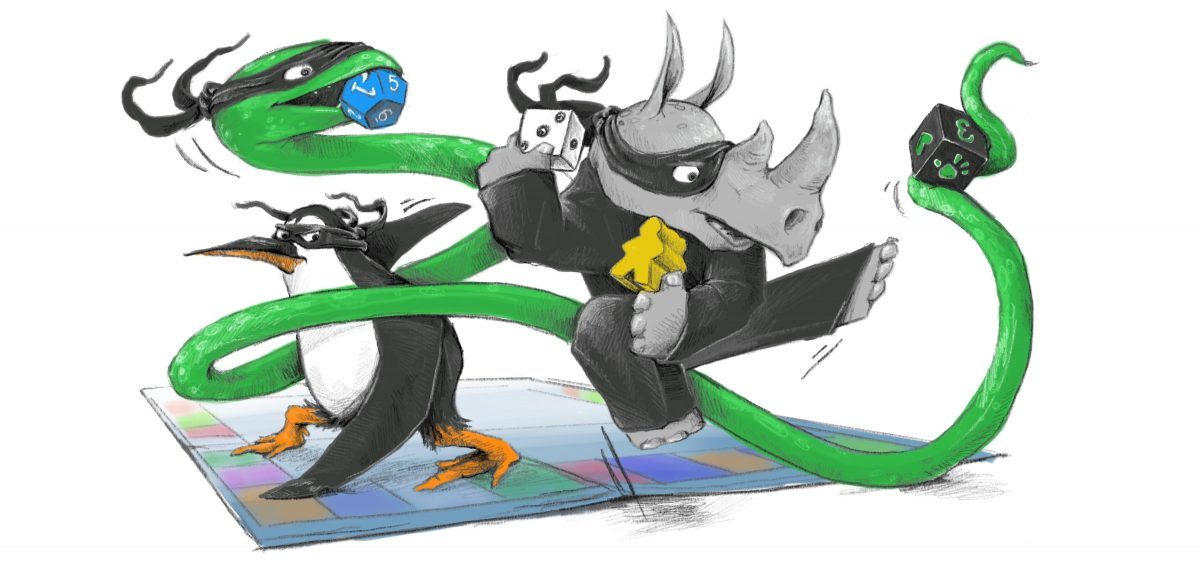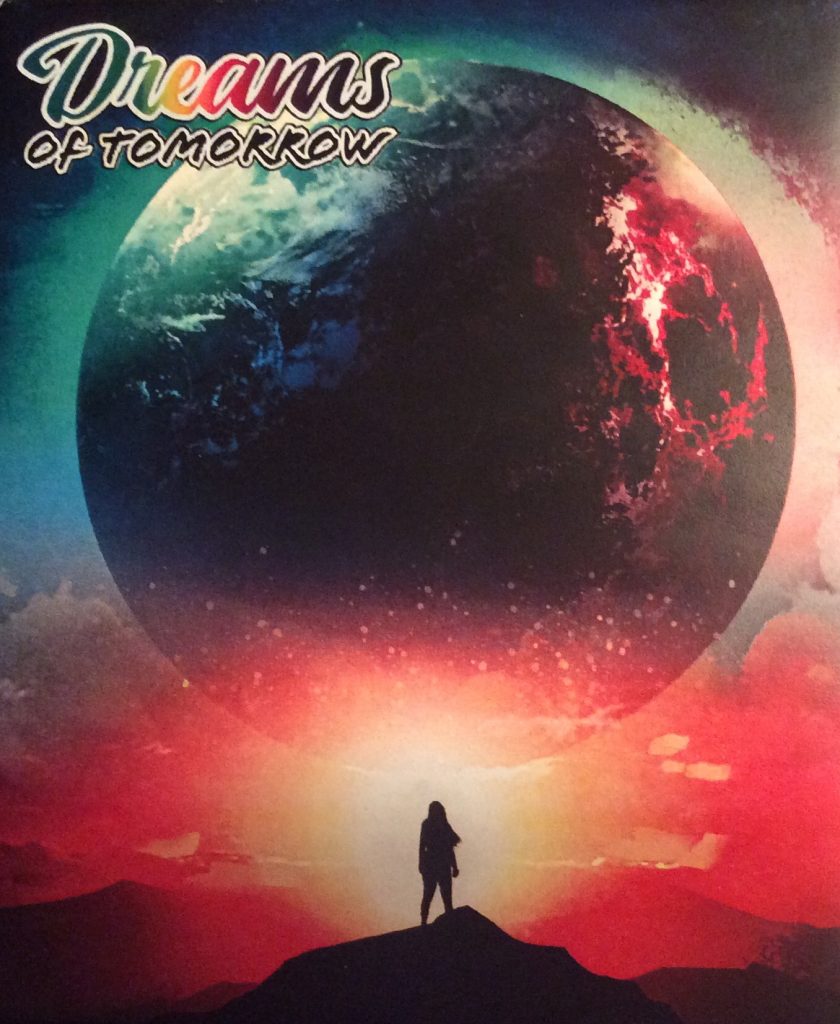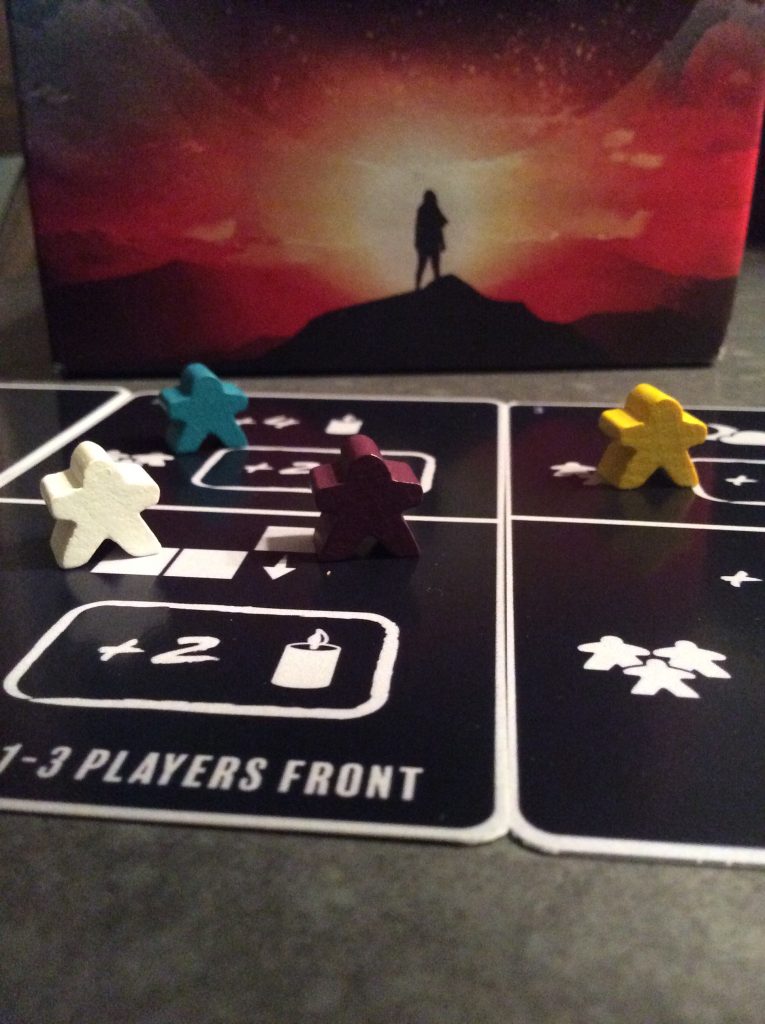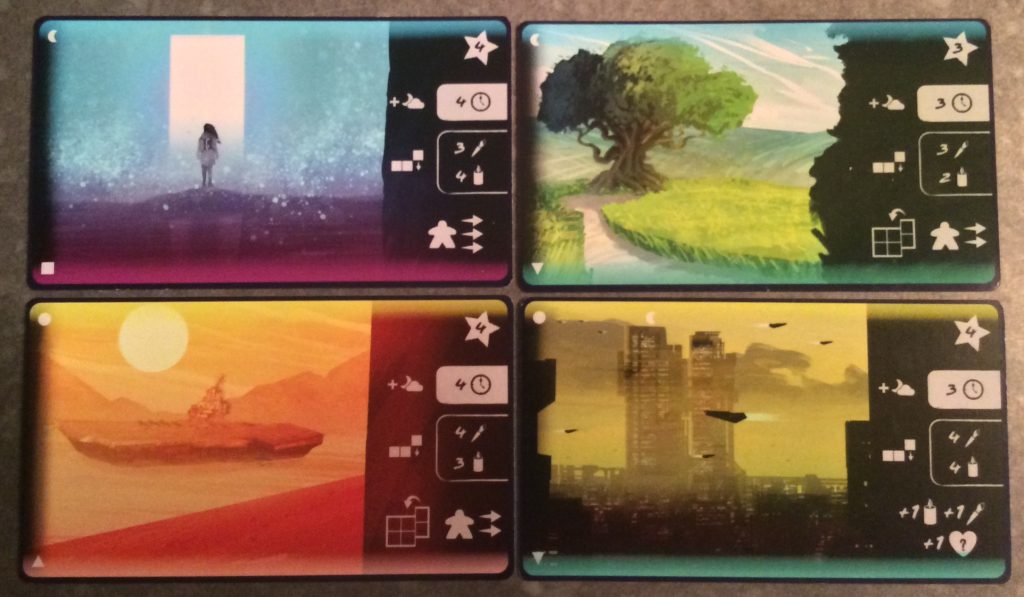Weird Giraffes games is back with another fantastic game. Or at least I think so anyway.
Wait, I was supposed to wait til the end of the review to say whether I like it or not, right? Well not this time. I think this one is going to be a big hit and I don’t mind telling everyone. It’s called Dreams of Tomorrow. Basically you are trying to collect Dream Fragments in order to build the best Dream Sequence that you can. But watch out for Night Mares, they can haunt your dreams and really screw you up.
So what’s this game about? Well, we are going to be collecting Dreams and piecing them together to form a Dream Sequence. Whoever has the best Dream Sequence at the end of the game wins. There are several different actions you can perform on your turn, but you can only do the one that is represented on the space on the Rondel where you Player token lands. Sometimes other players will also get something based on your choices.
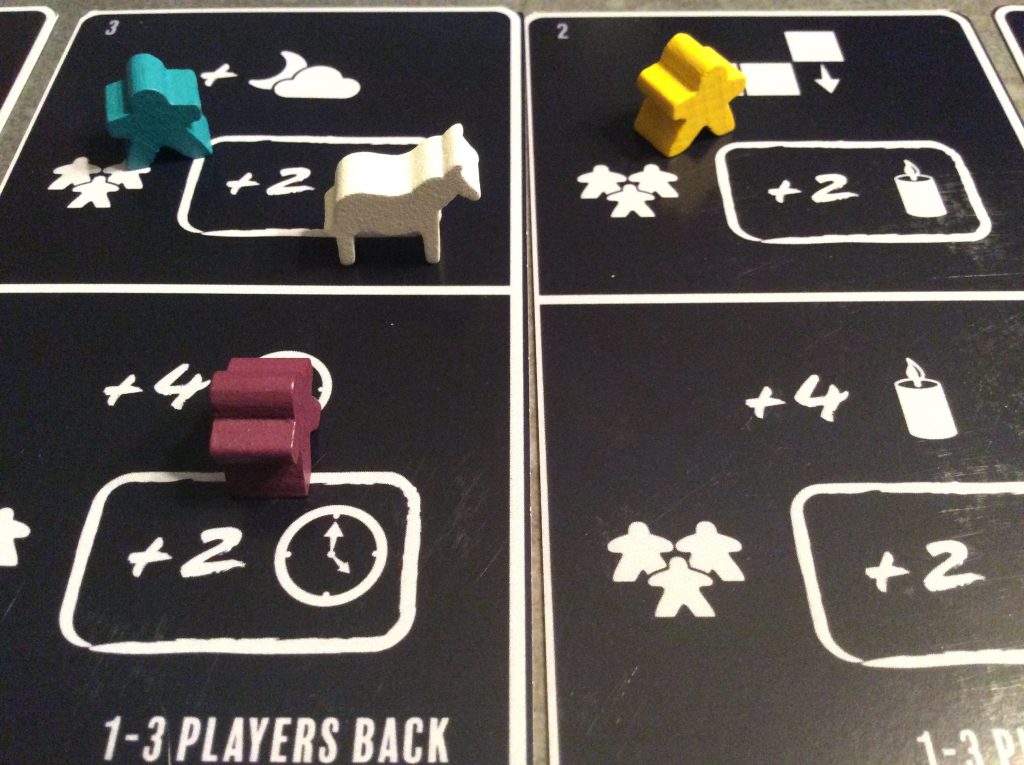 You can move 1-3 spaces each turn, or spend some Experience, Hope or Creativity to move more. Certain Abilities let you move more, or change the Rondel itself in order to get you where you need to go. You can even combine actions to make your turn even more beneficial.
You can move 1-3 spaces each turn, or spend some Experience, Hope or Creativity to move more. Certain Abilities let you move more, or change the Rondel itself in order to get you where you need to go. You can even combine actions to make your turn even more beneficial.
One of the first things you need to know about Dreams of Tomorrow is that it uses a Rondel. If you are unfamiliar with this mechanic, you are not alone. Basically there is a set of cards that your player token will move around, performing actions represented on the cards. Sometimes a Rondel is just a circle, here you will be moving Clockwise and sometimes Counter-Clockwise around a set of 4 cards made up of 8 spaces.
The Rondel is made up of 4 Consciousness Fragment Cards which together make up the Collective Consciousness. 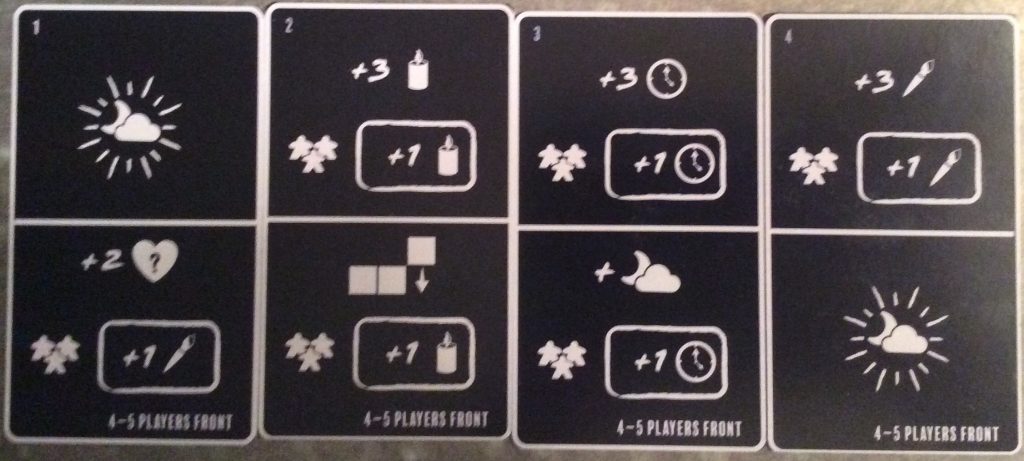 Each of these cards has a top portion and a bottom portion which show an action that you can take on your turn. To begin with everyone starts on the top left space in the Rondel and moves Clockwise around the 8 spaces. There are actions within the game that allow or force your characters to change direction and move Counter Clockwise. Sometimes this is beneficial, other times it messes you up.
Each of these cards has a top portion and a bottom portion which show an action that you can take on your turn. To begin with everyone starts on the top left space in the Rondel and moves Clockwise around the 8 spaces. There are actions within the game that allow or force your characters to change direction and move Counter Clockwise. Sometimes this is beneficial, other times it messes you up.
Here are the different actions (with pics)
Gain Hope – You gain 3 Hope -you will move your marker on the Hope track up 3 spaces– all other players gain 1 Hope.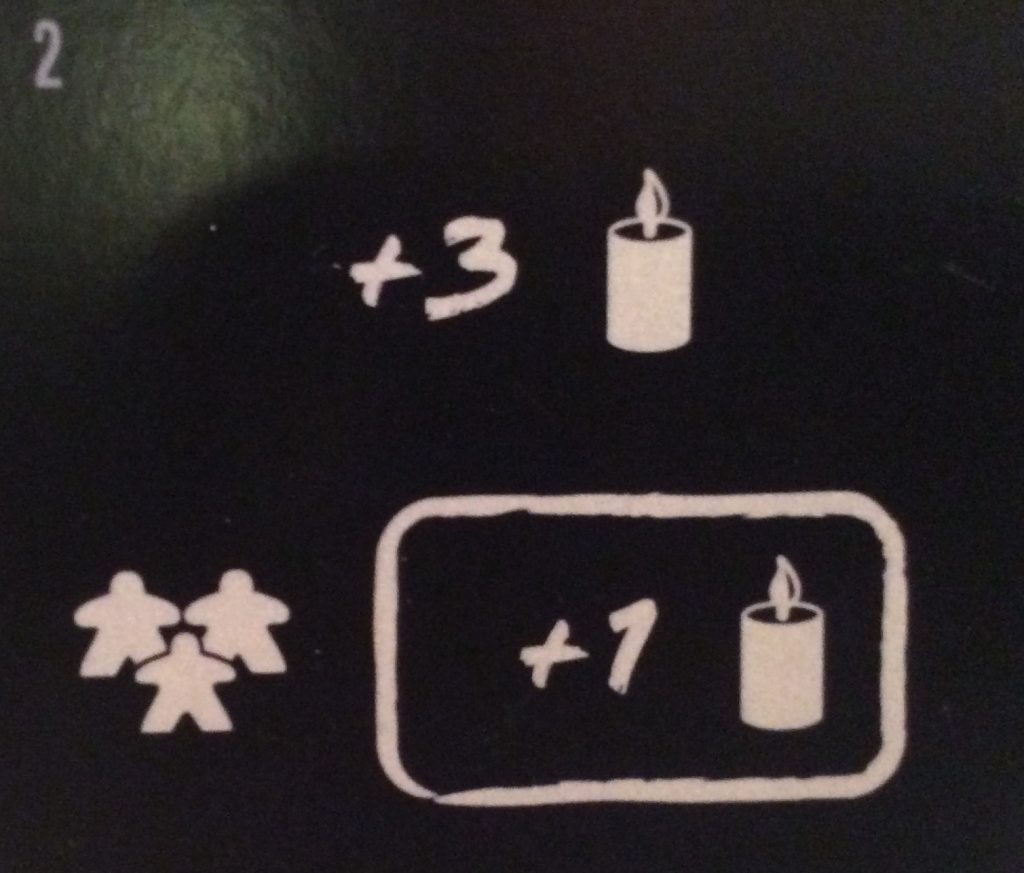
Gain Creativity – You gain 3 Creativitiy – you will move your marker on the Creativity track up 3 spaces – all other players gain 1 Creativity.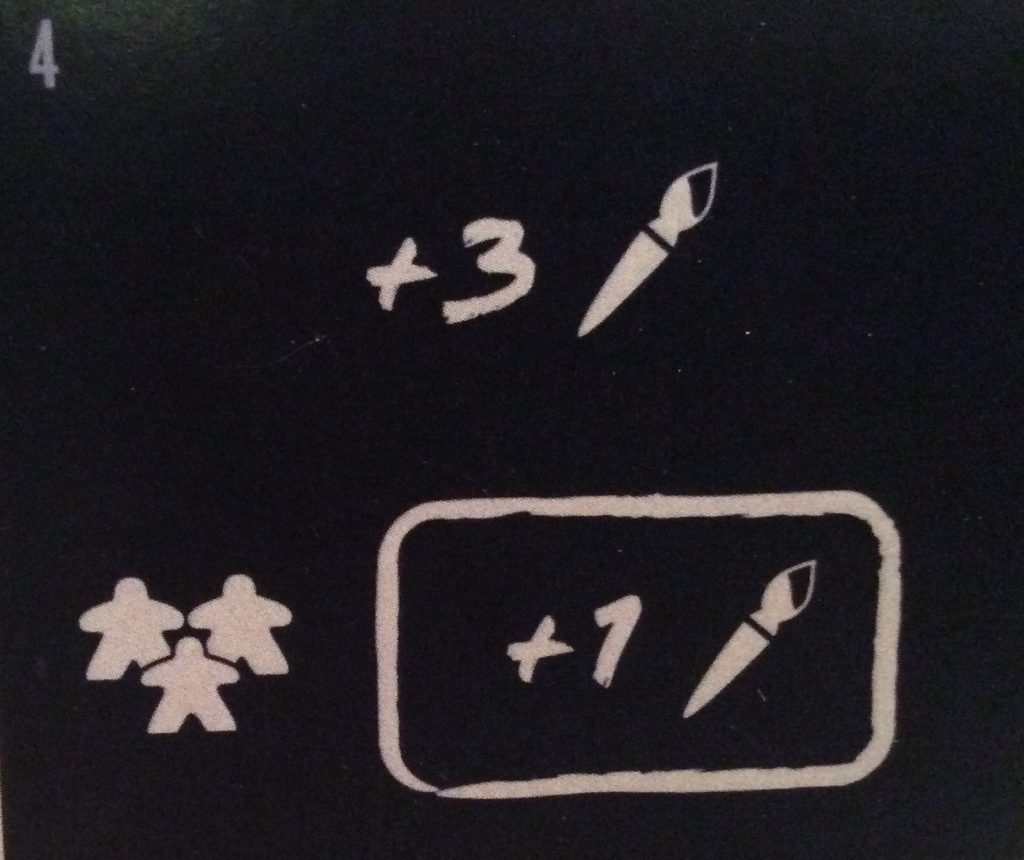
Gain Experience – You gain 3 Experience- you will move your marker on the Experience track up 3 spaces – all other players gain 1 Experience.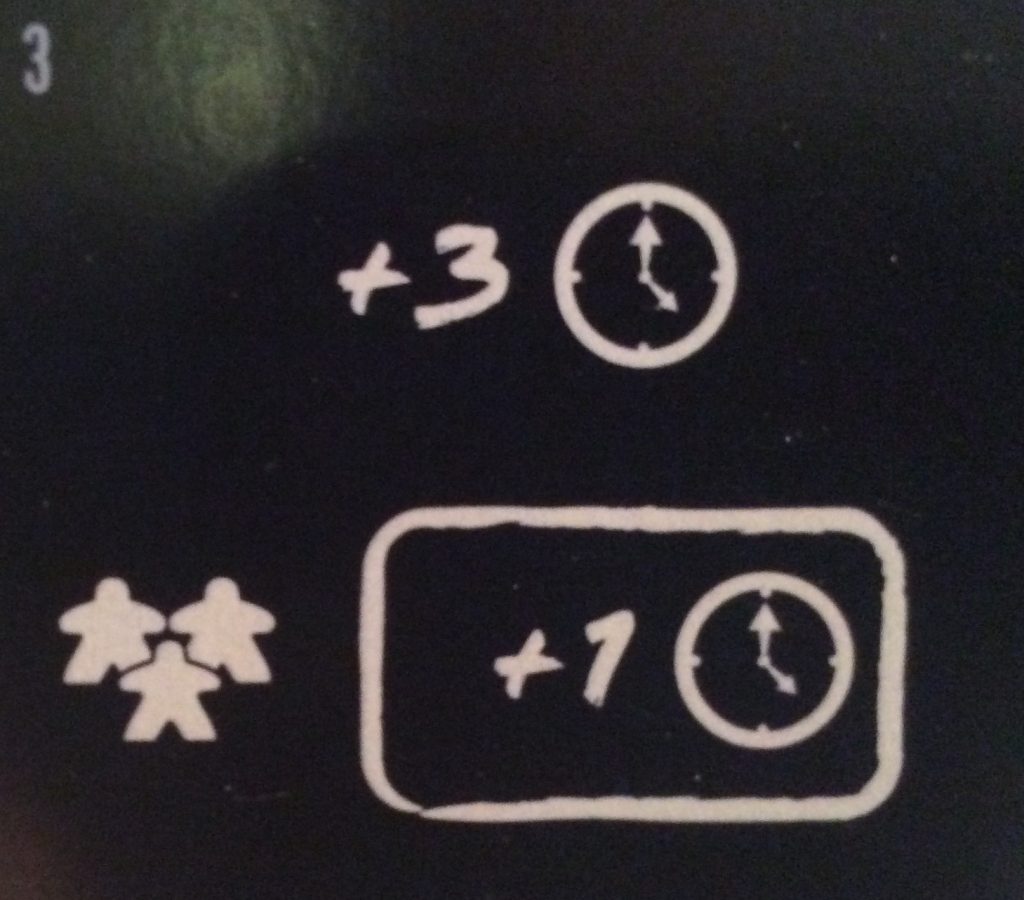
Gain any 2 resources of your choice – you will move your marker on the appropriate track(s) up a total of 2 spaces – all other players gain 1 Creativity.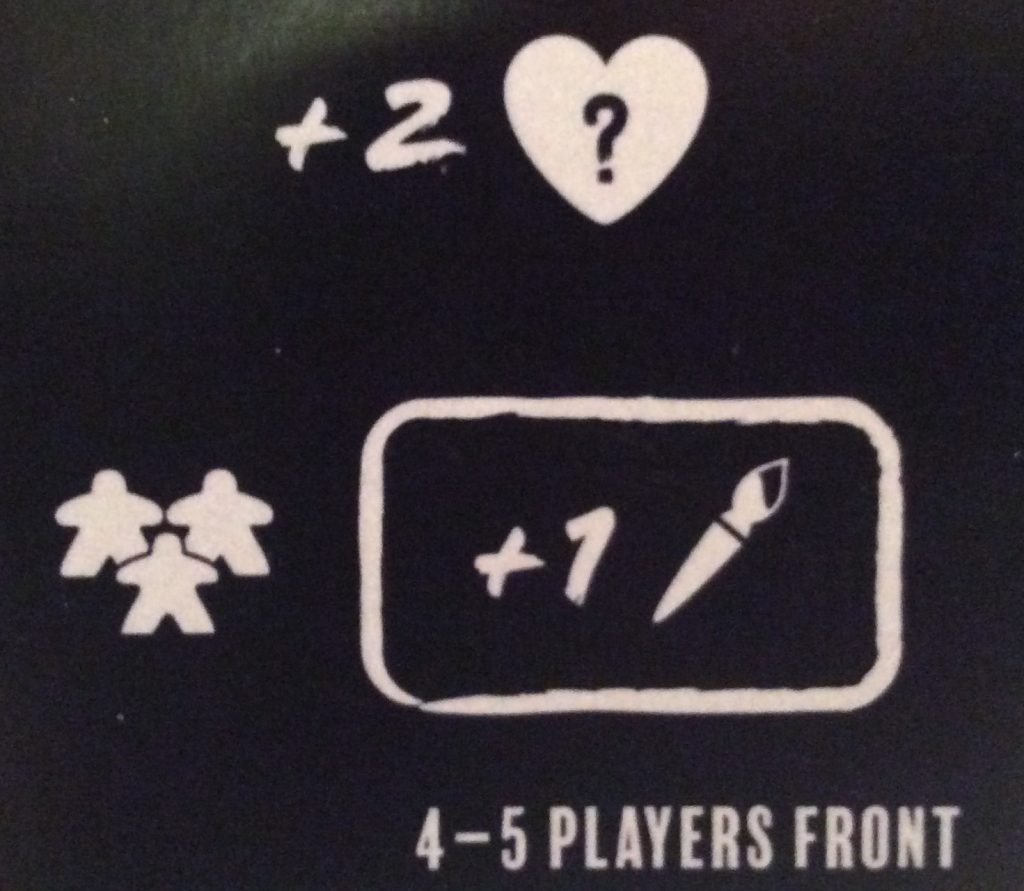
Catch a Dream – you will spend Experience equal to the cost of the Dream that you want to buy from the Dreamscape – add this Dream to your Dream Catcher (to the left of your player board) – all other players gain 1 Experience.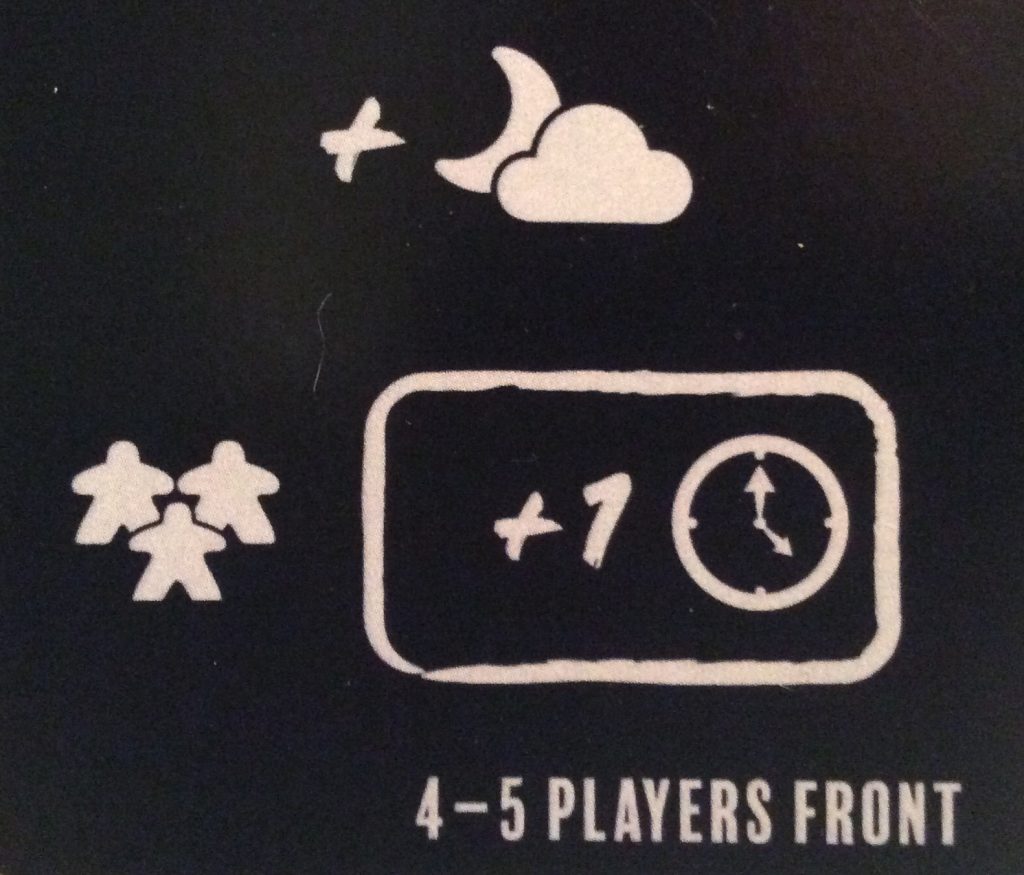
Weave a Dream into your Dream Sequence – you will spend Hope and Creativity equal to the cost of adding your Dream to your Dream Sequence and add it below your player card. You have to add it so only one Dream ability is showing in your sequence when you are done.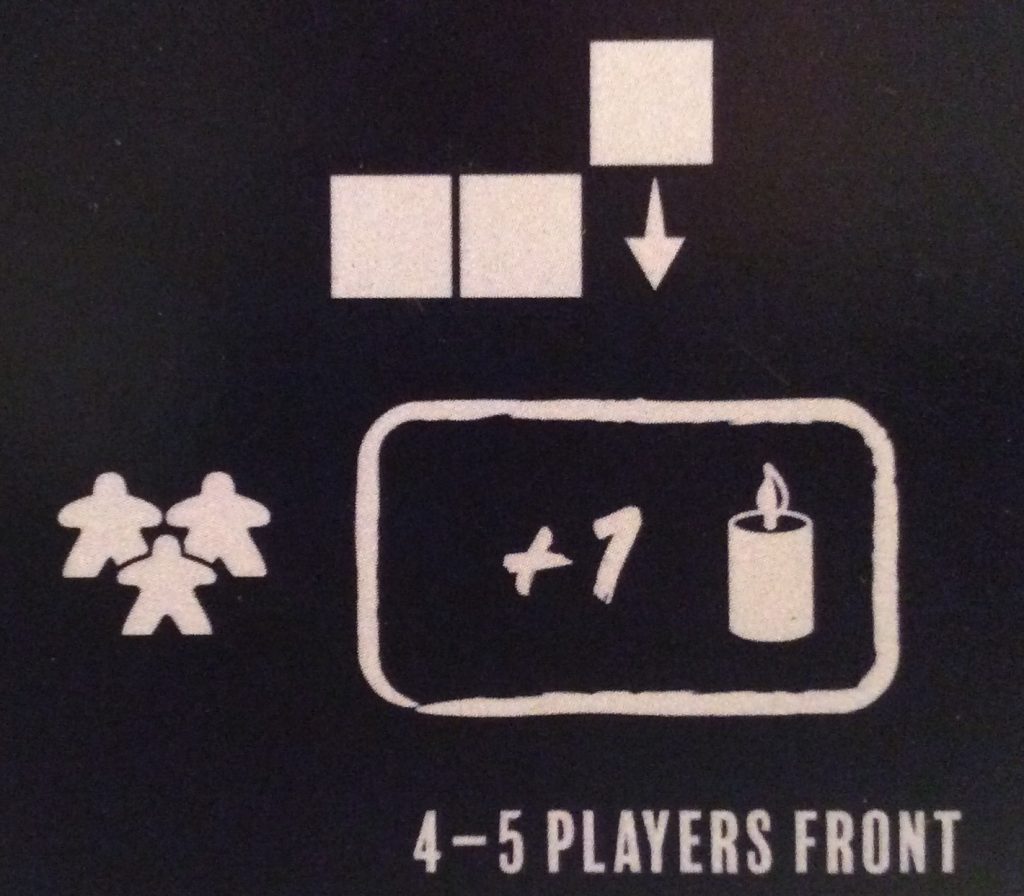
Use a Dream Ability – choose one of the Dream Abilities (either in your Dream Sequence or in your Dream Catcher) to Activate. These abilies allow you to manipulate the Rondel and/or move further around the Rondel to reach a space that you can then use immediately to perform a new action. (You can’t spend resources to move additional spaces when using Abilities). 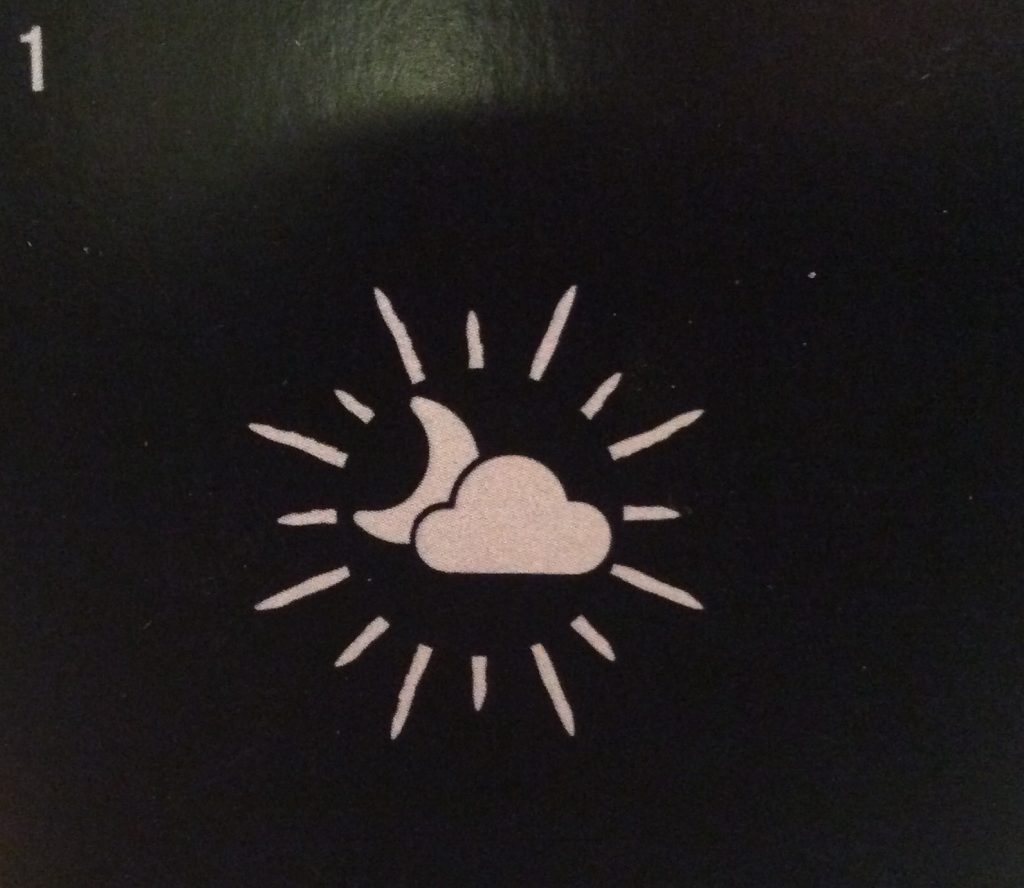
So, on your turn, you will decide which space is going to be most beneficial for you to land on, and try to get there. You can move 1,2, or 3 spaces on your turn for free, but if you want to move more, you have to spend resources. You can spend any of the 3 resources you want to in order to make this happen. So you move to the space and then perform the designated action. All spaces except Activating a Dream ability will cause the other players to gain 1 of some resource. You can only perform one action per turn unless you land on Activate a Dream Ability, which may allow you to move and/or perform another action. You keep track of your resources on your individual player board.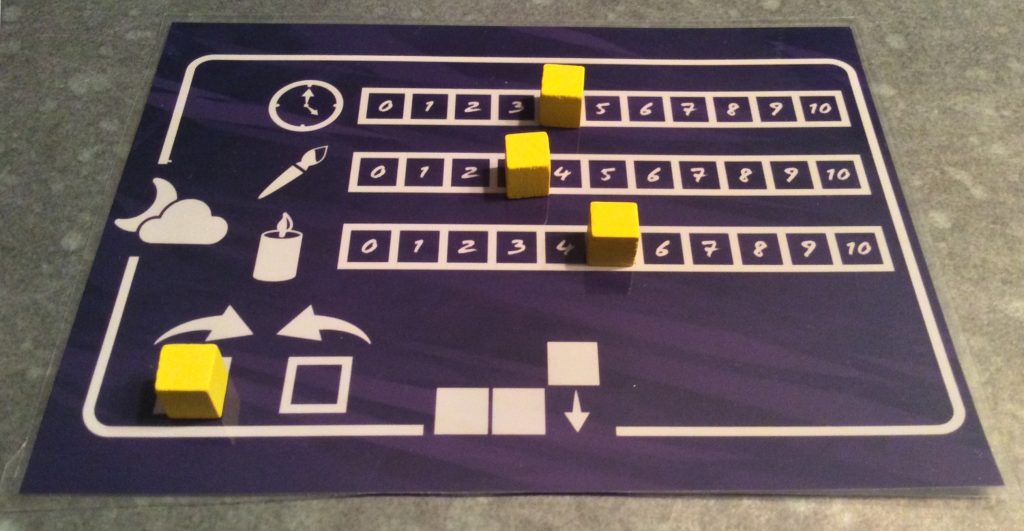
Then it’s the next player’s turn. You will almost always gain resources when it is not your turn, so pay attention, as this will greatly influence what you are going to do on your next turn.
So you basically travel around the Rondel gaining resources, and using these resources to Catch Dreams and Weave them into your Dreamscape. As soon as someone Weaves their fifth Dream into their Sequence, the round finishes and then the game is over.
So who wins?
Each Dream that you manage to Weave into your Sequence is important. They will each have a number of Dream Points (the star in the top right corner) that score when they are in your Sequence at the end of the game. In addition, each Dream card has symbols depicted in the top left and bottom left of the Dream Card. When matching symbols are touching in your Sequence that is a good thing, this is called Resonance. The more that match and touch, the more you score. Match all 5 symbols in a Sequence and score a whopping 11 points. Plus you count the Top and Bottom of your Sequence separately. Your Dreams Resonance can score you big points and potentially win you the game.
So count up all your Dream points and Resonance points and whoever has the most wins. Yay Dreams!
So what do I think?
Ok, let’s start with this, I love this game. It’s just the right amount of thinky for me and it moves pretty quick too. I’m always in tune to what’s going on because I’m gaining resources on other player’s turns as well as my own.
The Rondel is quite nice, since I can use Dream Abilities to rearrange it, flip the cards, which trades the locations of the two abilities on that card, or move extra around the Consciousness.
The Artwork is absolutely amazing. I find myself trying to collect a different type of Dream every game because I want to stare at the art of different cards. 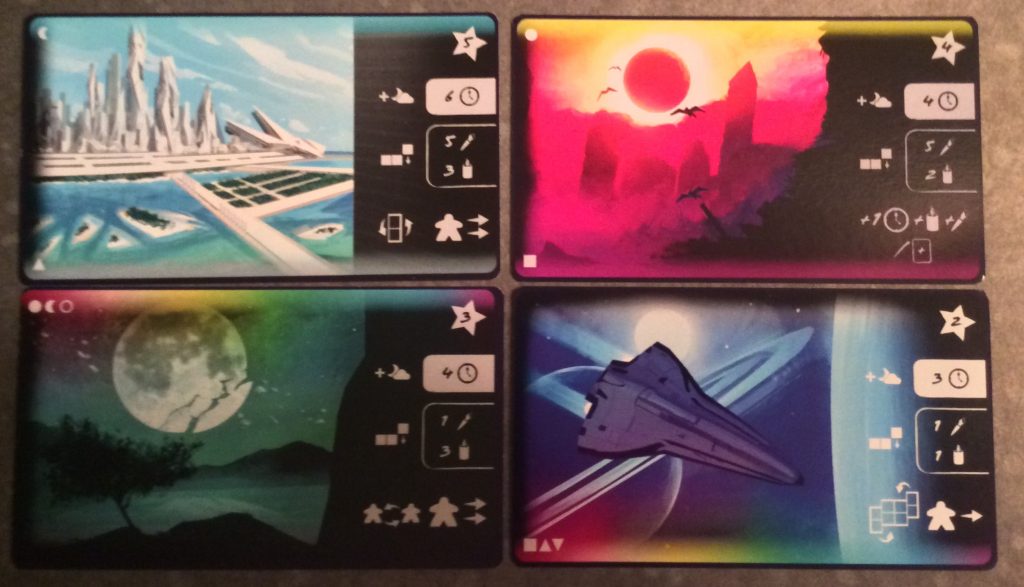 Cards with the same Art will have the same Resonance symbols and score you more points. Catching Dreams with different art is fun but doesn’t help you with scoring.
Cards with the same Art will have the same Resonance symbols and score you more points. Catching Dreams with different art is fun but doesn’t help you with scoring.
The iconography takes a minute to get, but once you do, it is quite helpful and succinct enough to not take away from the Artwork. Plus there are nice player aid cards to help with that.
The Abilities also allow me to wipe the Dreamscape and put out all new Dreams to choose from or to trade a Dream already in my Sequence for one in my Catcher. You can really manipulate this game to your liking, but it never feels like it is out of control or punishing.
That is unless you are playing with the Night Mare. I almost forgot about the Night Mare. Here’s what I think about the Night Mare: It stinks. Don’t take that wrong, the Night Mare is an incredible addition to the game and takes it from being a casual game that you are calmly enjoying, to one that suddenly becomes extremely competitive and at times frustrating (but in a good way). 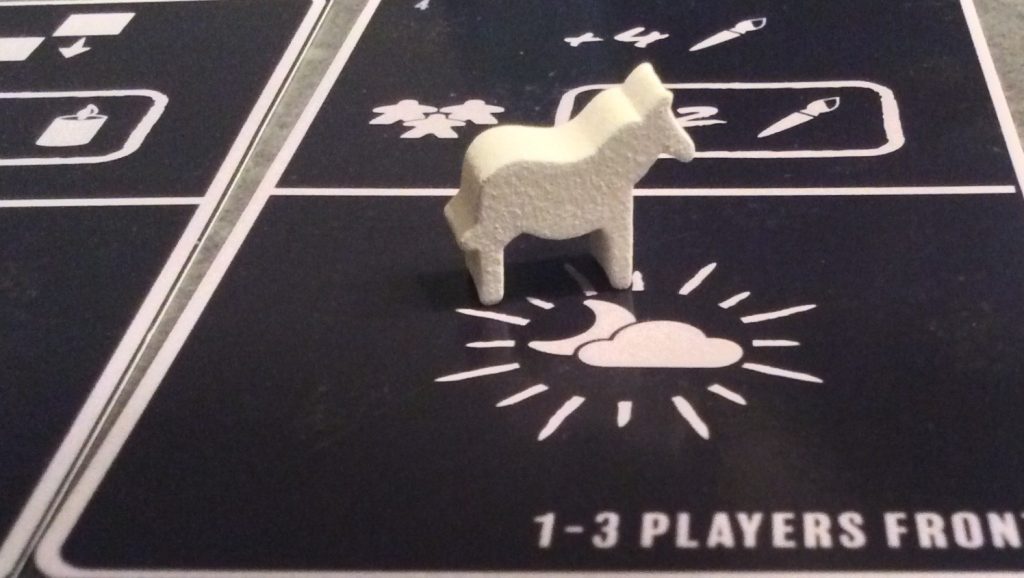
It makes the game quite a bit more challenging, and I am often found cursing the Night Mare on every turn.
In the regular mode which is called Pleasant Night mode, you usually have some idea as to what your next move will be. You can plan ahead. In the Night Mare game (called Troubled Night) you are regularly screwed up by the Night Mare. It will move the Collective Consciousness around, flip the cards, wipe the Dreamscape, or cause you to change direction and lose resources. Controlling the Night Mare is a little fiddly, but you get the hang of it pretty quickly.
So, you see, I love the Night Mare. I thought I wouldn’t, but I do. The Night Mare takes this game to another level. It allows you to play with two different types of gamers. You can play with a group of casual gamers or bring out the Night Mare for your really competitive group.
Some things to remember:
Don’t forget to spend unneeded Experience to move extra around the Rondel. The times when I remembered to spend my extra resources, are the ones that I won. There are a lot of time when spending just 1 Experience got me that one extra step and made a huge difference.
Try to plan your Resonance from the beginning of the game. Experienced players will have a distinct advantage since they will start thinking about Weaving their Dream Sequence correctly from the start. 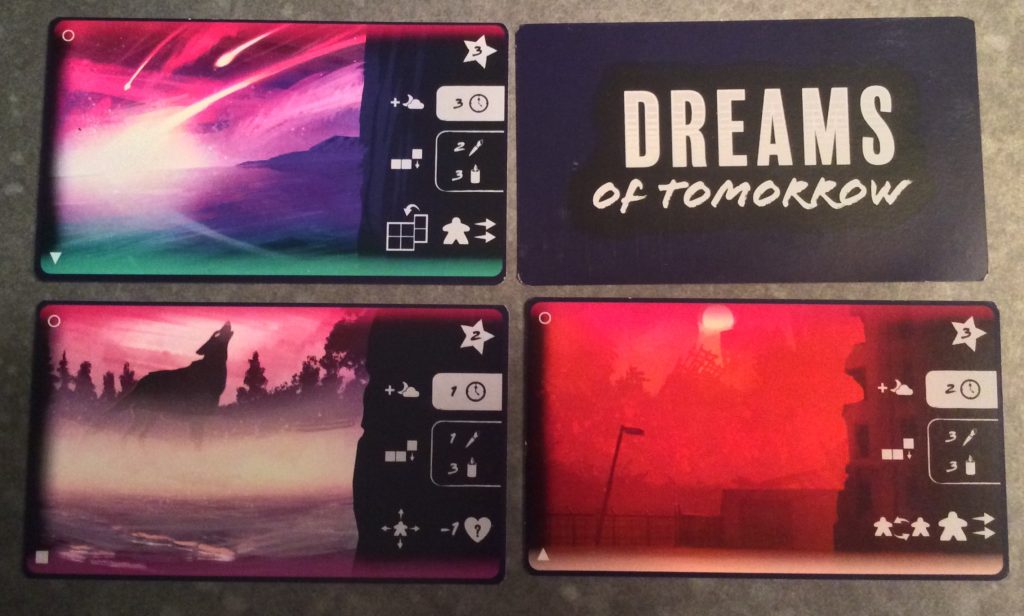
Any of the Dream Abilities in your Dream Catcher or the one showing in your Dream Sequence are available for you to use when Activating an Ability. You should Catch Dreams based both on their Dream points and their ability. Even if you never add the Dream to your Sequence, it could help you by giving you another ability to use during the game.
Beware the Night Mare. Love the Night Mare. It will screw you up, but sometimes you will be cheering it on as it changes everything to your advantage.
So, final thoughts?
Basically I love this one. It has just the right amount of challenge for me, which I can ramp up even more by adding the Night Mare. The Artwork is amazing and adds a great table presence. Each game that I have played has gone better for me than the previous one, which means I will keep wanting to play this game over and over. The variety of the modes of play also helps with the game’s replayability.
Did I mention the Art?
Dreams of Tomorrow is a super fun game that plays way bigger than it’s small box would suggest. You absolutely do not want to miss out on this one.
